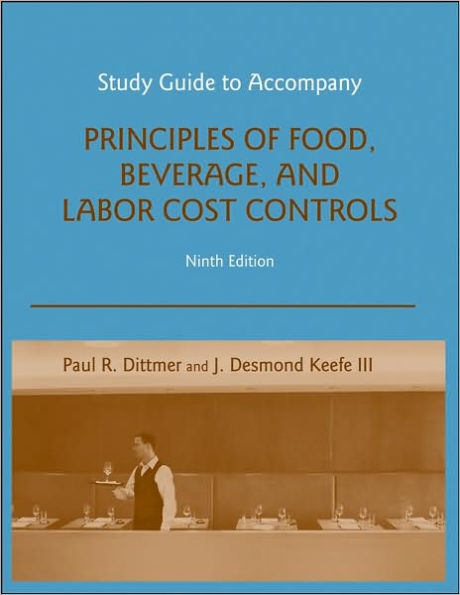Read an Excerpt
Preface
This text has been developed for use in courses introducing food, beverage, and labor cost controls to students preparing for careers in food and beverage management as well as hotels and other enterprises where this knowledge is necessary. This edition consists of twenty-one chapters plus an appendix, divided into four parts, as follows.
Part I offers an introduction to food, beverage, and labor cost controls, defining a number of key terms and concepts and providing a foundation for the balance of the work as well as some sense of its scope. It identifies working definitions for the terms cost and sales, discusses the control process in some detail, and introduces the basics of cost/volume/profit analysis.
Part II addresses the application of the four-step control process to the primary phases of foodservice operations: purchasing, receiving, storing, issuing, and production. Specific techniques and procedures for each phase are explained and discussed in detail. Three chapters are devoted to determining costs and using them as monitoring devices in foodservice operations. One chapter deals specifically with food sales control, offering a broad definition of the term and providing detailed discussion of several approaches to sales control.
Part III discusses the application of the four-step control process to the various beverage operations: purchasing, receiving, storing, issuing, and production. Here, too, specific techniques and procedures for each phase are explained and discussed in detail. One chapter is devoted to the principal methods used to monitor beverage operations. The final chapter inPart III specifically addresses beverage sales control, offering a broad definition of the term and providing detailed discussion of several approaches to controlling beverage sales.
Part IV is a four-chapter exposition of labor cost control. The first of the four explores the factors affecting labor cost and labor cost percentage. Admittedly, some of these are beyond the control of management, but it is important for managers to know about them. The second chapter discusses the need for performance standards. This leads naturally to a chapter on training, a topic many believe to be central to labor cost control. The concluding chapter in Part IV deals with monitoring performance and taking corrective action.
The appendix is an expansion of Chapter 3, "Cost/Volume/Profit Relationships." It is designed for students desiring a more in-depth understanding of this important topic. The material in the appendix, while important, is not necessary for an understanding of the principles discussed in the text.
The author recognizes that most food and beverage operations are computerized to some extent. Thus, each of the chapters in Parts I, II, and III has a concluding section dealing with computer operations; and Excel.computer exercises are provided at the end of each chapter, utilizing the floppy diskette found in the back of this book.
In developing and revising the text, flexibility has always been a key concern. For example, each of the four parts can generally stand alone. Except for Part I, eliminating any other part will not make it difficult to use the remaining parts. Thus, in courses without beverage components, instructors may prefer to skip Part III. And instructors in courses that do not include labor cost control can choose to ignore Part IV.
The book has a greater number of chapters than many instructors use in a one-term course. In our view, this is a virtue, because it provides instructors with opportunities to select chapters dealing with specific topics identified in their course syllabus. We believe this is the best way to meet the varying needs of instructors in the broad range of courses and programs in this field.
Because a great many chapters include more questions and problems than most will be inclined to assign, instructors will find it easy to make selective use of the end-of-chapter exercises for written assignment or for in-class discussion.
Supplementary Materials
An Instructor's Manual (ISBN 0-471-20778-0) to accompany the textbook is available to qualified adopters upon request from the publisher. It contains answers to the end-of-chapter questions and problems, along with various other materials designed to assist in the classroom.
The National Restaurant Association (NRA) Educational Foundation, in consultation with the author, has developed a Student Workbook for its ProMgmt. certificate program. The workbook contains exercises and a study outline for each chapter, and a practice test of 80 multiple-choice questions. This practice test will assist students in preparation for the certificate examination.
In addition, an Instructor's Guide (ISBN 0-471-20876-0) is available to qualified adopters to complement and highlight the information in the textbook and Student Workbook.




